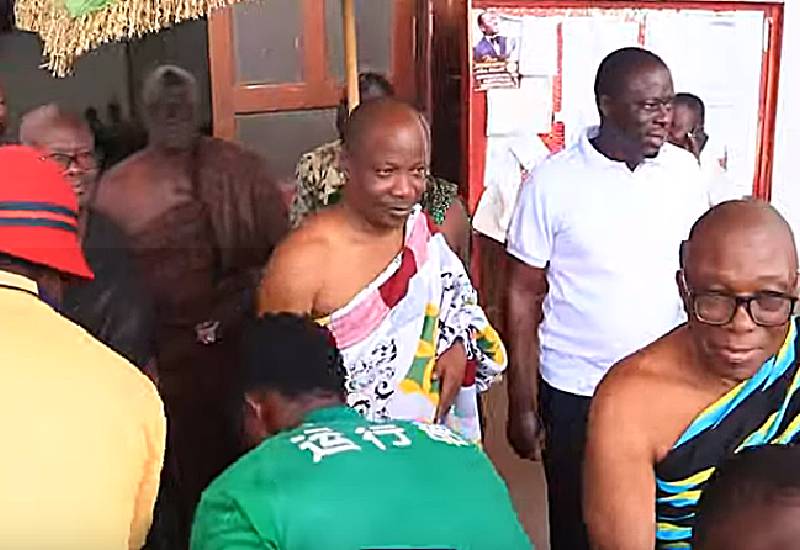By Godwin Owusu Frimpong
The protracted chieftaincy dispute in Sampa has taken another turn, raising serious questions about the judgment and motivations of those backing Nana Yaw Sammor-Duah II, the purported Sampahene, after yet another legal defeat. The Court of Appeal on April 7, 2025, dismissed a “Stay of Execution” application filed by Sammor-Duah’s group, effectively reaffirming an earlier High Court ruling that favors Nana Samgba Gyafla II.
This latest legal setback comes after a High Court order compelling the Bono Regional House of Chiefs to submit Nana Samgba Gyafla II’s chieftaincy declaration forms to the National House of Chiefs (NHC). The High Court further mandated the NHC to gazette Nana Gyafla II as the Sampa Paramount Chief within 21 days.
The legal saga began on June 14, 2024, when Nana Samgba Gyafla II initiated legal action against the Bono Regional House of Chiefs and the National House of Chiefs. His claim centered around the alleged refusal of the Bono Regional House of Chiefs to gazette his name as the Paramount Chief of the Sampa Traditional Area, despite being duly selected and having sworn allegiance to Asantehene Otumfuo Osei Tutu II.
He alleged that instead of recognizing his legitimacy, the Bono Regional House of Chiefs wrongfully submitted chieftaincy declaration forms to Nana Yaw Sammor-Duah II, who had been sworn in back in 2015, in what many see as a blatant disregard for due process.
Nana Samgba Gyafla II accused the regional house of defying previous arbitration rulings that unequivocally recognized him as the rightful chief. He alleged that the Bono Regional House of Chiefs improperly forwarded documents to the National House of Chiefs, wrongly recognizing Sammor-Duah as the Paramount Chief and one Nana Asraa II as Queenmother.
The Court of Appeal’s decision to dismiss the “Stay of Execution” application is a significant blow to Sammor-Duah’s camp and raises fundamental questions about their continued pursuit of a claim that has consistently been rejected by the courts. Observers are now pondering whether the continued challenges are rooted in genuine belief or driven by other, potentially less noble, motivations. The focus now shifts to the Bono Regional House of Chiefs and the National House of Chiefs, who are under increasing pressure to comply with the court orders and finally bring this prolonged chieftaincy dispute to a conclusive end. Only time will tell if peace and stability can finally return to the Sampa Traditional Area.
Godwin Owusu Frimpong




